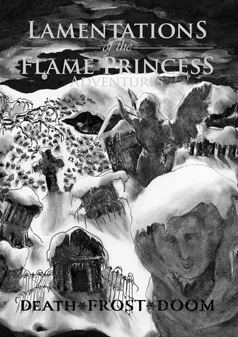I've been putting this off all day, but here it is...Yes! It is Daily Blog Challenge post 27...
No inspiration yet today. I'm feeling rather spent. I guess it was a long night with one too many beers or something. I watched the Pens win then City of Lost Children. I'm still considering another show this evening, but I don't have much motivation to leave the house this evening. I kind of want to crash out right now...
Since I haven't come up with anything better to write about, and I'm too tired to try to come up with something more interesting, I'll go through the last few chapters of Hollow Earth Expedition. I'm hoping this series of posts will prove helpful for me when I putting the game together. Sometimes writing about something makes it all a bit more clear.
Chapter 6 is on Gamemastering. Rather than assuming the reader has no knowledge of RPGs, the book actually assumes that this isn't your first experience running a role-playing game. Rather than spending a lot of pages talking about the generalities of RPG gamemastering, it jumps in with content specific to HEX. As someone who has read a fair number of gamemastering chapters for different games, it was a nice change of pace. "You already know how to do this. Here's some tips for doing it with HEX." There are sections on genre conventions, HEX conventions, and story structure. The chapter also provides a great deal of good information for forming both short and long campaigns. There are some great story seeds and some examples of developing the seeds into a plan for a game. I think these few pages have given me enough to put something together for my players.
Related to yesterday's post, where I talked about whether or not to use a battle mat for combat, the chapter does actually specifically state that HEX is not a tactical game and is not designed to be played with miniatures. I'm glad to see it in print, as I wasn't planning on running the game in that fashion anyway. There are some great examples given for getting the players and GM on the same page. For example, there is a suggestion for inviting the players over for a pre-campaign party, where you watch one of the films suggested in the appendix for inspiration, then discuss ideas for the up-coming campaign. With this information, the players can make some informed decisions as to what type of character to create. I won't do this for our demo game, but it sounds like a great technique for getting everyone on the same thematic page.
Chapter 7 is a sort of gazetteer for Hollow Earth, offering possible entry ways and a cosmology, explaining "how things work". I know a lot of my players read the blog, so I don't want to give away any spoilers at this point. Chapter 8 is titled "Friends and Enemies". It includes a laundry list of possible friendly and not-so-friendly organizations and NPCs. The NPCs are fully statted-out, and generic enough that they could be applied to any campaign a GM would want to run. There is a section for surface world people and groups and another for Hollow Earth people and groups. Chapter 9 is the bestiary, which features all sorts of dinos, giant animals, and deadly plants! Finally, there is a sample adventure, a pretty good list of pulp resources which includes print, film, comic book, radio, and television, a glossary, and an index.
I'm getting very excited about trying out the game. As I believe I mentioned (probably a few times), I'll be running HEX for my regular game group as soon as our Gamma World adventure wraps. I'll be sure to update with a game report and comments once that happens.
More "Dear JB" Advice
4 hours ago

 In preparation for my turn back behind the screen once the Gamma World adventure wraps up, I started ripping through Hollow Earth Expedition. I picked up the book at origins this summer after a quick demo at the booth, but I never really sat down and read it. I have to say, the writing is darn good.
In preparation for my turn back behind the screen once the Gamma World adventure wraps up, I started ripping through Hollow Earth Expedition. I picked up the book at origins this summer after a quick demo at the booth, but I never really sat down and read it. I have to say, the writing is darn good.



